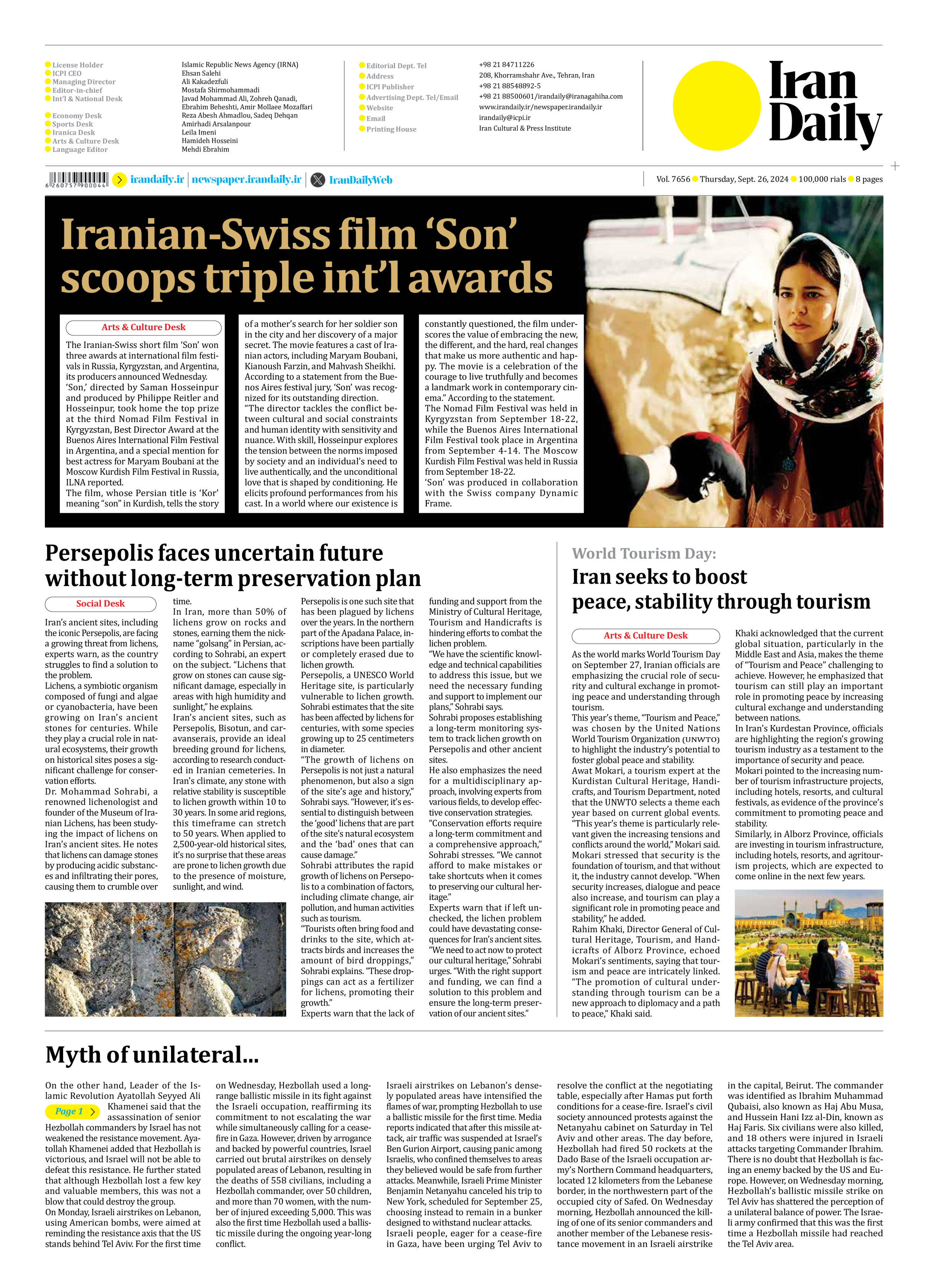
Persepolis faces uncertain future without long-term preservation plan
Iran’s ancient sites, including the iconic Persepolis, are facing a growing threat from lichens, experts warn, as the country struggles to find a solution to the problem.
Lichens, a symbiotic organism composed of fungi and algae or cyanobacteria, have been growing on Iran’s ancient stones for centuries. While they play a crucial role in natural ecosystems, their growth on historical sites poses a significant challenge for conservation efforts.
Dr. Mohammad Sohrabi, a renowned lichenologist and founder of the Museum of Iranian Lichens, has been studying the impact of lichens on Iran’s ancient sites. He notes that lichens can damage stones by producing acidic substances and infiltrating their pores, causing them to crumble over time.
In Iran, more than 50% of lichens grow on rocks and stones, earning them the nickname “golsang” in Persian, according to Sohrabi, an expert on the subject. “Lichens that grow on stones can cause significant damage, especially in areas with high humidity and sunlight,” he explains.
Iran’s ancient sites, such as Persepolis, Bisotun, and caravanserais, provide an ideal breeding ground for lichens, according to research conducted in Iranian cemeteries. In Iran’s climate, any stone with relative stability is susceptible to lichen growth within 10 to 30 years. In some arid regions, this timeframe can stretch to 50 years. When applied to 2,500-year-old historical sites, it’s no surprise that these areas are prone to lichen growth due to the presence of moisture, sunlight, and wind.
Persepolis is one such site that has been plagued by lichens over the years. In the northern part of the Apadana Palace, inscriptions have been partially or completely erased due to lichen growth.
Persepolis, a UNESCO World Heritage site, is particularly vulnerable to lichen growth. Sohrabi estimates that the site has been affected by lichens for centuries, with some species growing up to 25 centimeters in diameter.
“The growth of lichens on Persepolis is not just a natural phenomenon, but also a sign of the site’s age and history,” Sohrabi says. “However, it’s essential to distinguish between the ‘good’ lichens that are part of the site’s natural ecosystem and the ‘bad’ ones that can cause damage.”
Sohrabi attributes the rapid growth of lichens on Persepolis to a combination of factors, including climate change, air pollution, and human activities such as tourism.
“Tourists often bring food and drinks to the site, which attracts birds and increases the amount of bird droppings,” Sohrabi explains. “These droppings can act as a fertilizer for lichens, promoting their growth.”
Experts warn that the lack of funding and support from the Ministry of Cultural Heritage, Tourism and Handicrafts is hindering efforts to combat the lichen problem.
“We have the scientific knowledge and technical capabilities to address this issue, but we need the necessary funding and support to implement our plans,” Sohrabi says.
Sohrabi proposes establishing a long-term monitoring system to track lichen growth on Persepolis and other ancient sites.
He also emphasizes the need for a multidisciplinary approach, involving experts from various fields, to develop effective conservation strategies.
“Conservation efforts require a long-term commitment and a comprehensive approach,” Sohrabi stresses. “We cannot afford to make mistakes or take shortcuts when it comes to preserving our cultural heritage.”
Experts warn that if left unchecked, the lichen problem could have devastating consequences for Iran’s ancient sites.
“We need to act now to protect our cultural heritage,” Sohrabi urges. “With the right support and funding, we can find a solution to this problem and ensure the long-term preservation of our ancient sites.”







